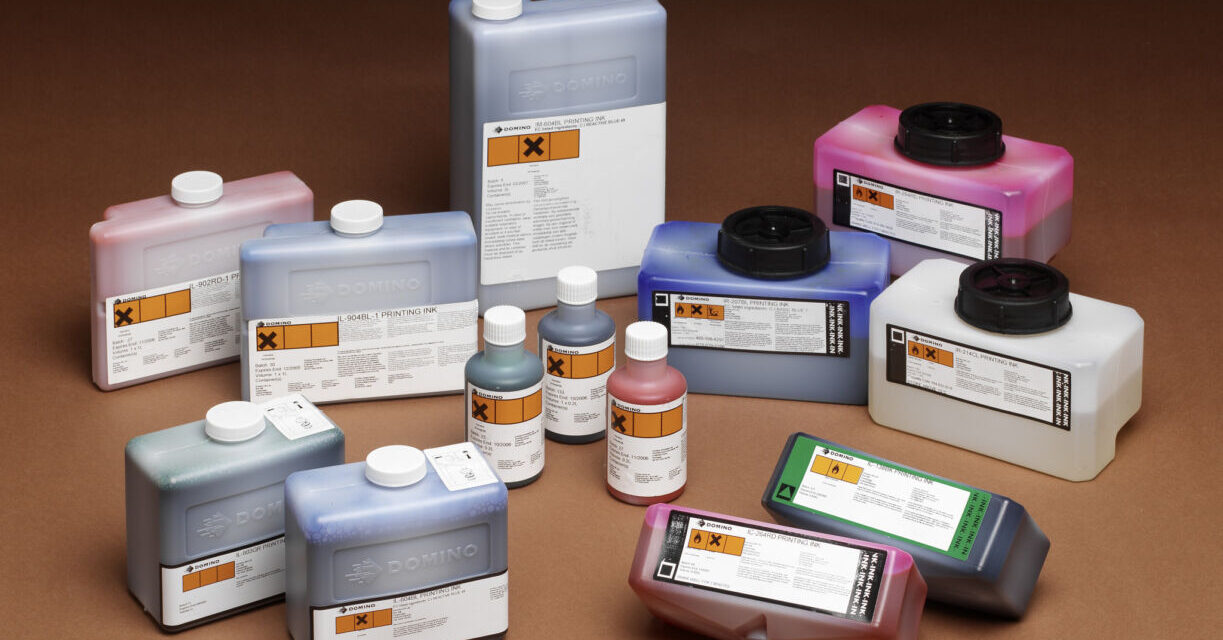|
With production costs on the rise, it can be tempting for manufacturers to make short-term savings by buying low-cost, unbranded, or white-label printer inks and consumables marketed as ‘compatible’ by third-party providers. But what might the long-term impact of using non-genuine inks and consumables be? Are compatible inks as good as originals? At face value, ‘compatible’ products may look like the genuine article but dig under the surface, and the differences become stark. Compatible inks may initially perform as expected, but the impacts over time can seriously harm production performance, code quality, worker and consumer safety, and ultimately brand perception. Jill Woods, Group Product Compliance Manager, Domino Printing Sciences, delves into five reasons why manufacturers should think twice about using unapproved third-party inks, including their effect on businesses, consumers, and society. Using ‘compatible’ inks can affect print quality Much like counterfeit designer goods in retail; a compatible ink and a genuine ink may look nearly identical to the naked eye but are almost certainly made from different ingredients that may not perform the same way and can cause issues with print quality on manufacturing lines. Print quality and legibility are paramount when coding and marking products and packaging. Missing, incomplete, damaged, or unreadable product codes can cause goods to be rejected further down the supply chain, increasing the risk of punitive fines, loss of custom, and costing manufacturers significant amounts in rework and wasted stock. Legitimate providers will carry out pre- and post-manufacturing testing of all formulations to ensure maximum performance and offer sample testing, using state-of-the-art analytical equipment to ensure the proper performance of the ink under the required conditions. Low-cost printer inks from unapproved third-party ink providers do not carry the same assurances – the formulations may not perform as expected or adhere properly to the substrate, leading to poor-quality prints or codes that can be easily smudged or removed. Using ‘compatible’ inks can damage your printer Untested, low-cost inks are likely to be lower quality than approved inks and consequently cause damage to the inner workings of printers. Different printer types require different ink formulations. Using the wrong ink can cause unnecessary wear and damage to printer components, including pumps, pipes, and tubes, and lead to ink build-up and debris on print heads and nozzles. This damage can affect print quality and cause printers to break down, potentially resulting in production line stoppages until repairs can be made. Aside from the cost of lost productivity and wastage resulting from poorly printed products, the cost incurred in fixing a printer fault without a warranty could be substantially more than the savings made from using low-cost inks. Clearly, this adds up to be a false economy. ‘Non-genuine’ inks can pose a risk to consumers The most concerning aspect of using unapproved third-party inks is that they could risk harm to retailers and consumers. Requirements for inks used on food and beverage products, pharmaceuticals, and medical devices are strictly regulated. Manufacturers within these industries have to ensure that inks are safe for their intended use – this means that ink formulations will not migrate through packaging or threaten consumer health if they come into direct contact with products. Non-certified inks may include unsafe or untested substances, making them entirely unsuitable for use in regulated industries and putting consumers at risk of serious harm. Manufacturers are legally responsible for any ink used in their production processes, so working with proven and reputable ink suppliers is imperative. Regulatory breaches can result in brands facing hefty fines, criminal convictions, and long-term brand damage. ‘Compatible’ inks can pose a risk to production line workers Printing inks may be composed of chemicals that, if mishandled, may pose a risk to workers on the production line. Refilling ink supplies and printer maintenance tasks bring production workers into close contact with inks and fluids. As such, it’s essential to ensure that they are fully equipped to handle these inks correctly and safely. Inks from reputable suppliers will come with individual product safety data sheets in line with current regulations and for all countries where products are bought and sold. Safety data sheets will provide information on chemical composition, potential health hazards, protective measures, and safety precautions for handling, storing, and transporting inks. Keeping costs down could cause third-party ink providers to take shortcuts, such as avoiding manufacturing compliance approvals, which adds risk to those handling the inks. ‘Non-genuine’ inks can have a negative environmental and social impact Third-party ink providers may operate outside regulations, potentially using unsustainable or environmentally polluting materials, machinery, and processes to produce cheap inks. Using untested, non-genuine inks can also create unnecessary waste further up the supply chain and on the production line through poor code quality, further compounding environmental impact. In addition, untested, third-party inks may be produced in dangerous conditions, or have illicit or unethical supply chains, undermining the health and wellbeing of individuals involved in developing, creating, and distributing products. Genuine suppliers will develop, manufacture, and supply their inks in line with corporate social responsibility standards. Domino ensures that all our materials are ethically, sustainably, and responsibly sourced and voluntarily opens our supply chains up for independent audit. Does the reward outweigh the risk? Compatible inks and consumables might seem like a cheaper, cost-saving solution in the first instance. However, not only are they unlikely to award any cost savings in the long run, the risk to businesses from using untested, unregulated, largely unknown substances is much greater than poor-quality coding. |
The real risk of non-genuine inks and consumables





